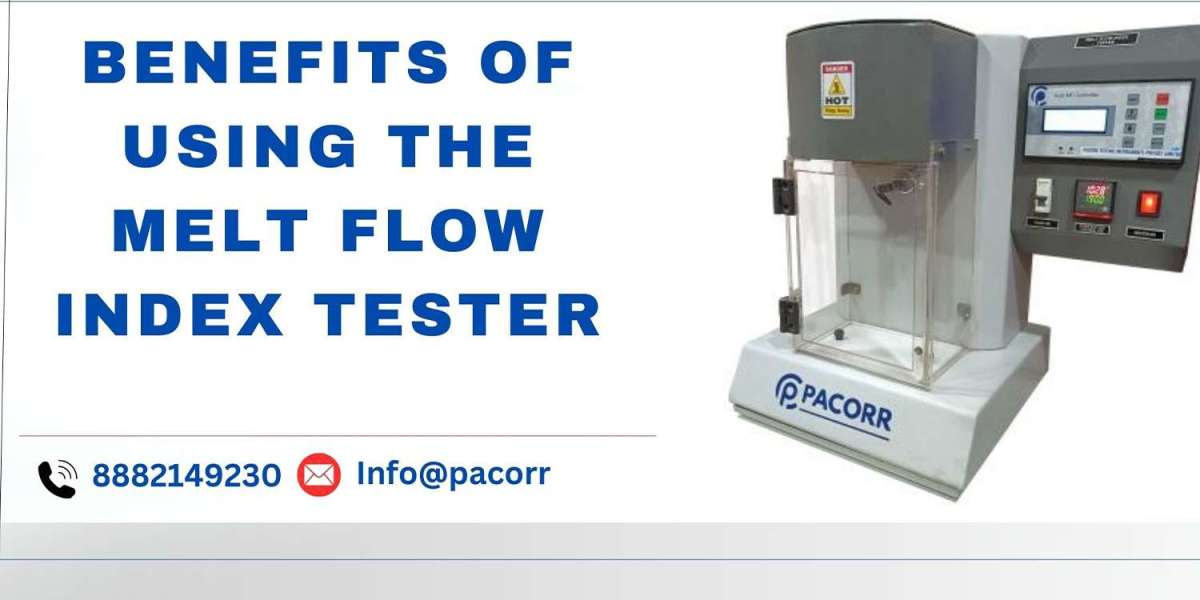At Pacorr.com, we specialize in providing high-quality MFI testers that help manufacturers measure the melt flow rate (MFR) of thermoplastics. In this blog, we will explore what an MFI tester is, its importance, applications, and how it can revolutionize your quality control process.
What is a Melt Flow Index Tester?
A Melt Flow Index Tester measures the flowability of thermoplastic materials in their molten state. It calculates the Melt Flow Rate (MFR), which represents the weight of polymer extruded through a capillary die in 10 minutes under a specified temperature and load. This testing is vital for understanding a polymer’s viscosity and its suitability for various manufacturing processes.
Why is Melt Flow Index Testing Crucial?
Material Quality Assurance
Ensures that the raw materials meet required specifications, ensuring consistent quality.Production Optimization
Helps manufacturers determine the optimal temperature and pressure for processing materials.Batch Consistency
Verifies that all production batches adhere to quality standards, reducing defects and wastage.Cost Reduction
Minimizes material waste by accurately matching polymers to their intended applications.
Key Features of Pacorr’s Melt Flow Index Testers
- Precision Heating System: Provides stable and consistent temperatures for accurate results.
- Robust Build: Designed for durability and heavy-duty usage in industrial settings.
- User-Friendly Operation: Easy-to-use interface for seamless testing.
- Standard Compliance: Meets international standards like ASTM D1238 and ISO 1133.
- Versatile Testing: Capable of testing a wide variety of thermoplastics, including polyethylene, polypropylene, and ABS.
How Does a Melt Flow Index Tester Work?
- Sample Preparation: A small sample of polymer material is placed in the heated barrel of the tester.
- Heating: The sample is melted at a specific temperature.
- Load Application: A standard load is applied to extrude the molten polymer through a capillary die.
- Flow Measurement: The amount of material extruded in 10 minutes is recorded as the Melt Flow Rate (MFR).
Applications of Melt Flow Index Testers
- Plastic Manufacturing: Evaluates flow properties of materials like PE, PP, PS, and PVC.
- Automotive Industry: Ensures the quality of plastic components used in vehicles.
- Packaging Sector: Tests materials used for films, wraps, and containers.
- Medical Equipment: Develops polymers with precise properties for medical applications.
Benefits of Using Melt Flow Index Testers
Enhanced Product Quality
Ensures that only the highest-quality materials are used in production.Improved Process Efficiency
Optimizes manufacturing conditions, saving time and resources.Reduced Material Waste
Identifies the best polymer for specific applications, minimizing waste.Compliance with Standards
Ensures that products meet global quality and safety standards.
Choosing the Right Melt Flow Index Tester
When selecting an MFI tester, consider these factors:
- Material Compatibility: Ensure the tester suits the specific polymers you work with.
- Testing Standards: Look for compliance with ASTM D1238 or ISO 1133 standards.
- Automation Options: Choose between manual, semi-automatic, or fully automatic testers based on your requirements.
- Budget and Features: Balance cost with essential features like precision and durability.
Why Choose Pacorr for Melt Flow Index Testing?
At Pacorr.com, we pride ourselves on delivering reliable and efficient testing solutions. Here’s why our MFI testers stand out:
- High Accuracy: Achieve consistent and repeatable results.
- Durable Design: Built to last in demanding industrial environments.
- Wide Range of Options: From basic to advanced models tailored to your needs.
- Exceptional Support: Enjoy expert guidance and after-sales assistance.
Maintenance Tips for Melt Flow Index Testers
- Regular Cleaning: Keep the barrel and die free from residue to ensure accurate results.
- Calibration: Periodically calibrate the machine to maintain precision.
- Proper Storage: Store the tester in a clean, temperature-controlled environment.
- Follow Manufacturer Guidelines: Adhere to operational and maintenance instructions for longevity.
Conclusion
A Melt Flow Index Tester is a critical tool for industries working with thermoplastics. By investing in high-quality testers from Pacorr.com, manufacturers can ensure superior product quality, improve process efficiency, and minimize costs. Whether you’re in automotive, packaging, or medical equipment production, our MFI testers are designed to meet your diverse needs.
Explore Pacorr’s Melt Flow Index Testers today and take your quality assurance to the next level!







